SFCASA Visits Grace Cathedral for Lost Childhoods Exhibit
On Monday, October 19, SFCASA staff took a short field trip to visit Grace Cathedral, where the Foster Youth Museum is showing its Lost Childhoods exhibit
The exhibit highlights the work of one of our most important partners in the community of foster youth advocacy: California Youth Connections (CYC). CYC helps current and former foster youth find their place at the forefront of policy and decisions being made on behalf of young people within the dependency system. CYC empowers and trains youth to be agents of change within their community. We have witnessed the incredible impact this organization has had on so many of the young people SFCASA serves, giving them an outlet to use their voice and to regain power over their lives.
The collection chronicles youth experiences in foster care by sharing the voices of the young people who are too often ignored and silenced. It is organized into five sections: developmental disruption, institutionalization, powerlessness, loss, and finally, transformation. Each section highlights an emotional aspect of foster care that dramatically affects a foster youth's development and success later in life.
As we walked through the exhibit, we were struck by the stark images, displays, and photographs. Dental floss lies in a glass case with toilet paper and other personal hygiene products to highlight the lack of access to these basic necessities in many group homes. Another display case holds common foods served at some group homes, where it's shockingly difficult for a young person to get a healthy meal. Throughout there are pictures of foster youth, who share their stories of abuse, homelessness, and the struggle to establish their identity.
But the picture isn't completely bleak. There is a college diploma, graduation robes, souvenirs from trips abroad, and photos of a beautiful wedding. Perhaps the most inspiring are the multiple photos of families of different shapes, sizes, and circumstances, who together have overcome the negative effects of foster care to develop stable relationships.
We read one youth’s story of how important it is for service providers to treat him as an individual and not judge him by what information is in his court report. As a staff, we reflected on how we can be a catalyst for this shift in thinking. By training and supporting our advocates to treat each youth as an individual rather than as a case, we create space for our CASAs to get to know their young person on a personal level with no pre-conceived notions or judgments. We can also work on recruiting and training more community members to become advocates.
Here at SFCASA, we see too often how lack of a voice can negatively impact a foster youth's chance of success. As we walked through the exhibit, we were particularly moved by the many ways in which these stories directly connect to our work. The Foster Youth Museum is the largest collection of its kind. You can see the free exhibit at Grace Cathedral in San Francisco until November 1st.
We're always looking for more CASA volunteers to join us in our essential work standing up for the rights of foster youth in San Francisco.
If you'd like to join us, visit our Volunteer Page to learn more.



